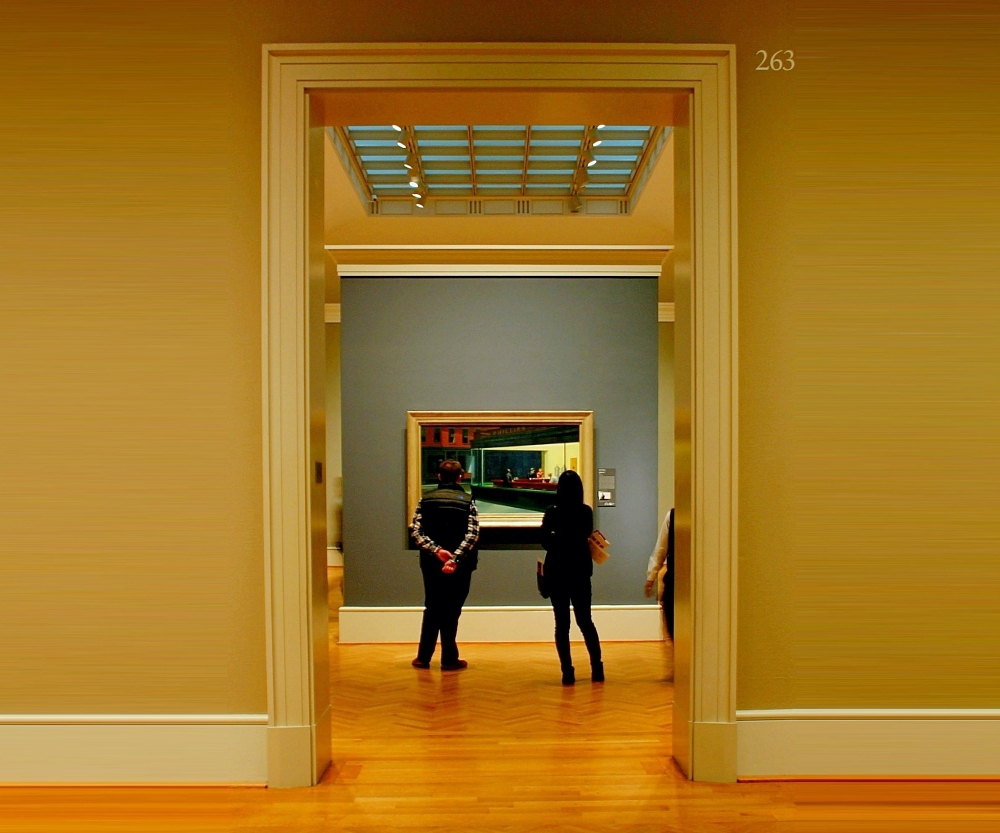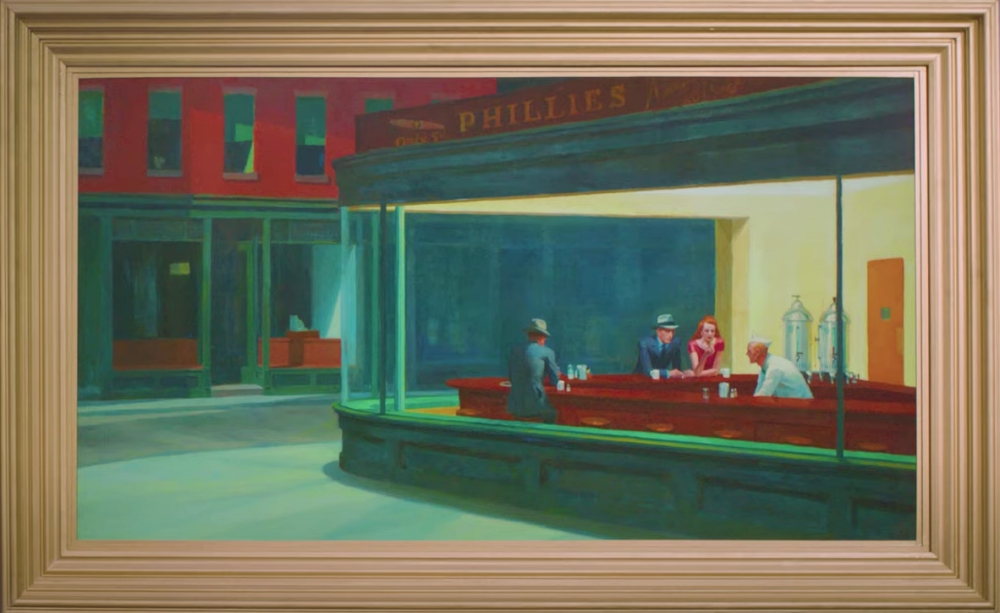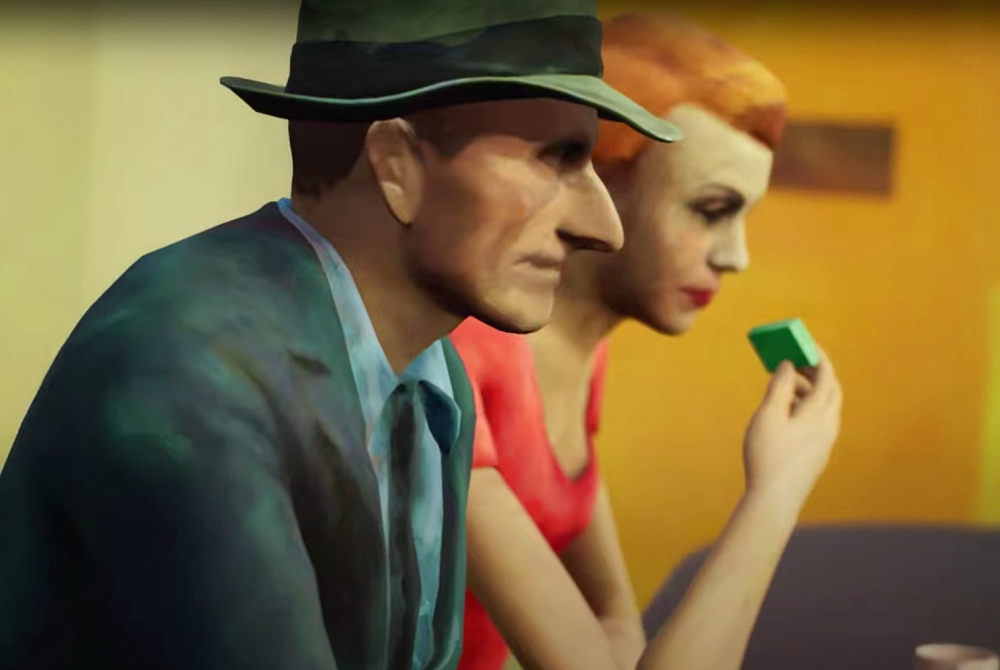Few painters of the mid-20th century captured the starkness of urban life quite like Edward Hopper. The famed painter depicted ordinary and mundane scenes of everyday life: a woman waiting for intermission to end, a Victorian house on the edge of town, or a trio of customers at a late night diner. This last scene forms the basis for Nighthawks, painted in 1942. Now this masterpiece of modern art has been mapped in 3D using AI and the results are very interesting.

The London Mixed Augmented Reality Studios (MARS) specializes in virtual reality special effects and they took on the painting to learn more about how it was made. They determined that a person of around 6 feet tall painted the image from about 20 meters (22 yards) away. They also attempt to reveal the face of the man whose back is towards the viewer. And, they address the question of whether the couple -modeled by Hopper and his wife, Jo- at the other end of the bar are together or not.
Most importantly they look at what shape the building in the painting actually is- something that’s been debated for decades. Hopper himself stated that the inspiration for the painting came from a restaurant in Greenwich Village, though the building in question has never been revealed.

Hopper has long been noted for showing how lonely life in a big city can be, though when it came to this image he said the despair in the nighttime diner was not a conscious choice. But, it’s hard not to read into the painting with our own ideas of what the subjects must be thinking. Using spatial mapping techniques the MARS team has looked into some of these questions and has even simulated the diner from other angles, creating “Nighthawks that never were”.
It’s a fascinating look into the world of an artist and for a moment you almost feel as if you’ve stepped back in time to a brightly-colored 1940s New York.

See inside this iconic painting in 3D in the video below.
SKM: below-content placeholderWhizzco for DOT

